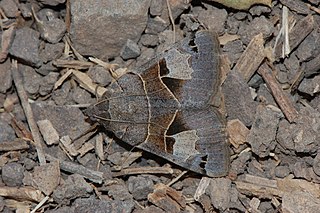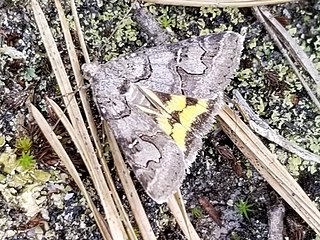
Drasteria is a genus of moths in the family Erebidae.

Drasteria cailino is a moth of the family Erebidae first described by Alexandre Louis Lefèbvre de Cérisy in 1827. It is found in southern Europe, the Near East and Middle East up to the western Himalayas in the east. In the Levant, several isolated populations are present in Lebanon, Syria and Israel.
Drasteria flexuosa is a moth of the family Erebidae first described by Édouard Ménétries in 1847. It is found in the semi-deserts and deserts from eastern Egypt, to Israel, Jordan, Syria, Kazachstan, China, Mongolia and Afghanistan.
Drasteria herzi is a moth of the family Erebidae first described by Sergei Alphéraky in 1895. It is found in Transcaucasia, Turkmenistan, Khirgizia, Turkey, northern Iran, Israel, Jordan and Sanai.
Drasteria oranensis is a moth of the family Erebidae first described by Rothschild in 1920. It is found from Algeria, to Libya, Egypt, Israel and Saudi Arabia.
Drasteria kabylaria is a moth of the family Erebidae first described by Andreas Bang-Haas in 1906. It is found from the western and central parts of the Sahara, to the Arabian Peninsula, Jordan, Sinai, south to Oman.

Drasteria adumbrata, the shadowy arches, is a moth of the family Erebidae. The species was first described by Hans Hermann Behr in 1870. It is found from coast to coast in southern Canada, south in the west to California and Colorado, south in the east to New England and Michigan. Subspecies D. a. alleni is found from eastern Alberta to New York and Nova Scotia. Subspecies D. a. saxea occurs from southern British Columbia and south-west Alberta south to California and Colorado.
Drasteria hudsonica, the northern arches, is a moth of the family Erebidae. The species was first described by Augustus Radcliffe Grote and Coleman Townsend Robinson in 1865. It is found from Alaska and Yukon to California, east to New Mexico and Manitoba.
Drasteria pallescens, the cowhead arches, is a moth of the family Erebidae. The species was first described by Augustus Radcliffe Grote and Coleman Townsend Robinson in 1866. It is found in North America from Alberta and Saskatchewan south to Texas and Baja California.
Drasteria petricola, the little arches, is a moth of the family Erebidae. The species was first described by Francis Walker in 1858. It is found in western North America from Yukon and the Northwest Territories south to New Mexico in the Rocky Mountains, east to Manitoba.
Drasteria grandirena, the figure-seven moth or great kidney, is a moth of the family Erebidae first described by Adrian Hardy Haworth in 1809. It is found in North America from Ontario, Quebec and Nova Scotia, south to at least Georgia west to at least Arkansas

Drasteria sabulosa is a moth of the family Erebidae. It is found from British Columbia south into the United States where it found as far east as Wyoming, Utah, Colorado, New Mexico and as far south as Arizona.
Drasteria hastingsii is a moth of the family Erebidae. It is found from British Columbia south to Oregon and California.

Drasteria edwardsii is a moth of the family Erebidae. It is found from Washington, through Oregon to California.
Drasteria mirifica is a moth of the family Erebidae. It is found in North America, including Nevada, Oregon and California.

Drasteria graphica, the graphic moth, is a moth of the family Erebidae. The species was first described by Jacob Hübner in 1818. It is found in the United States in coastal dunes from Maine to Florida, west to Mississippi. It is also found along the shores of the Great Lakes in Michigan and Wisconsin. Subspecies D. g. atlantica is listed as threatened in Connecticut.
Drasteria inepta, the inept drasteria, is a moth of the family Erebidae. It is found from Arizona to Texas, north to Colorado and Utah.

Drasteria parallela is a moth in the family Erebidae. It is found in the Cascade Mountains of Washington, the Klamath and Siskiyou Mountains of south-western Oregon and the northern Sierra Nevada in California. The habitat consists of exposed ridges in forests at middle elevations.
Drasteria yerburyi is a moth of the family Erebidae. It is found in Somalia, Eritrea, the United Arab Emirates, Yemen and Iran.
Drasteria occulta, the occult drasteria moth, is a moth of the family Erebidae. The species was first described by Henry Edwards in 1881. It is found in North America, where it has been recorded from coastal areas in Maine, New Jersey, Pennsylvania and Texas. It is listed as a species of special concern and believed extirpated in the US state of Connecticut.






